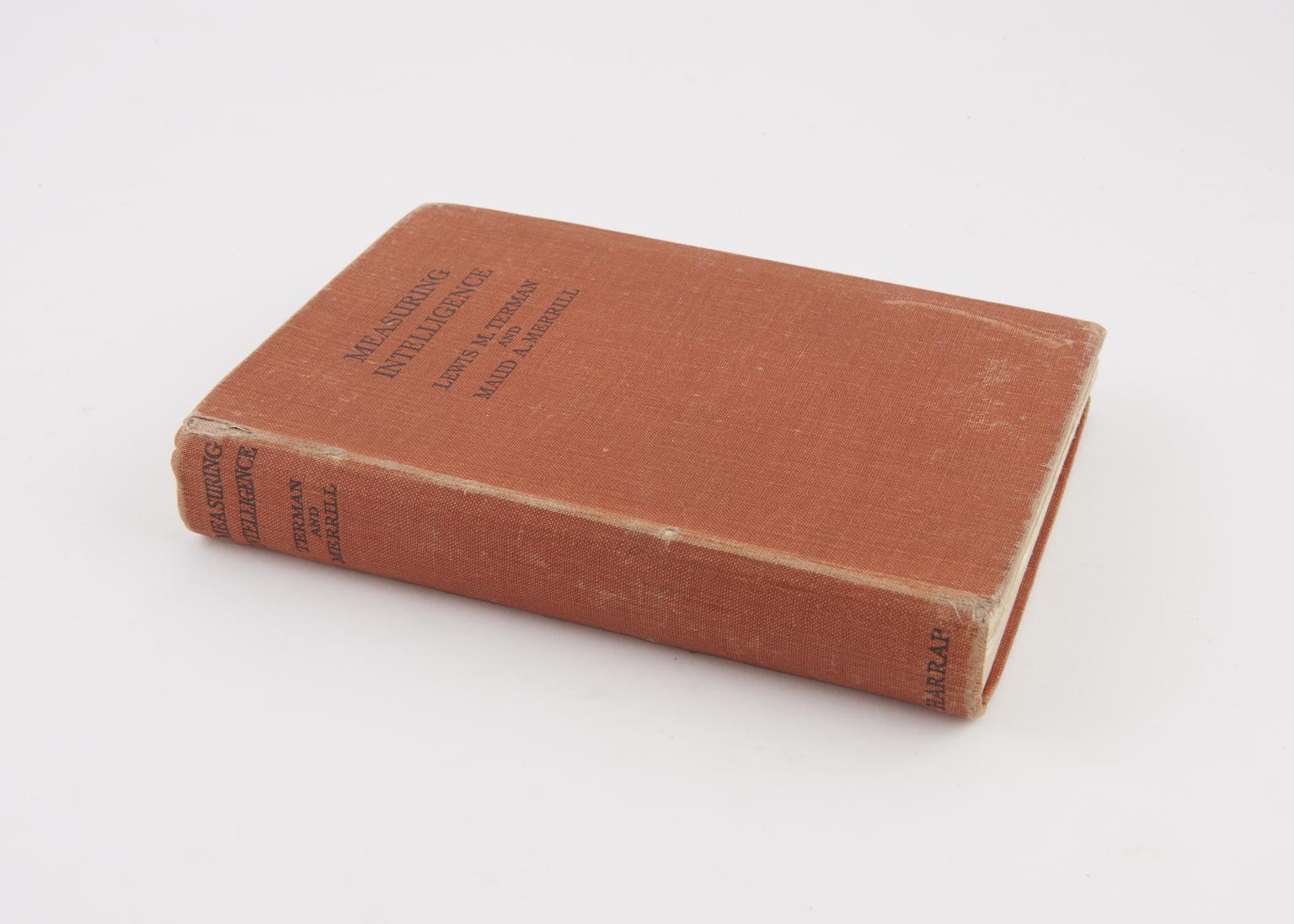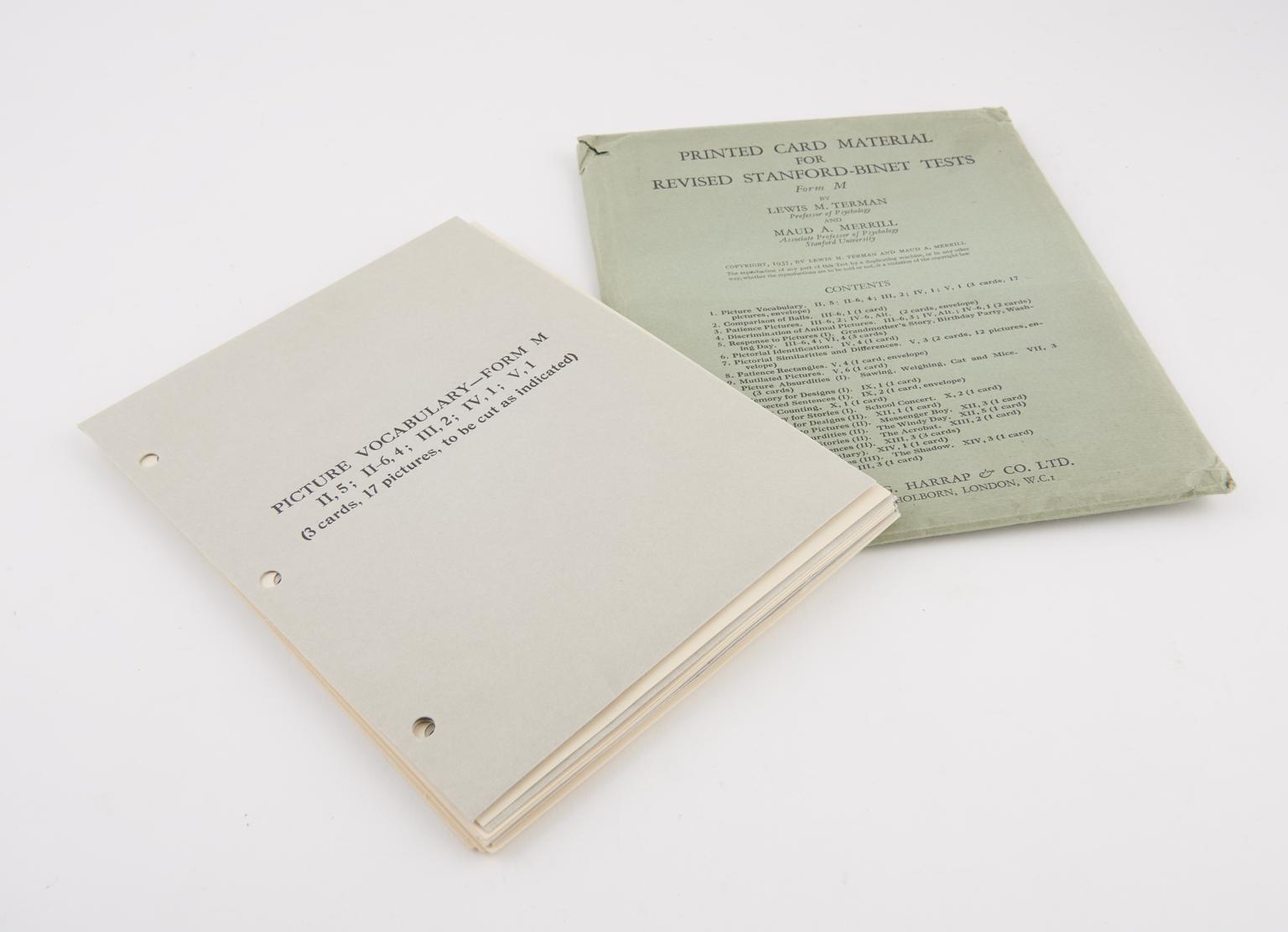
'Measuring Intelligence', book by L.M. Terman and M.A. Merrill
_Measuring Intelligence_, book by L.M. Terman and M.A. Merrill, 1937 edition reprinted 1947.
Test materials for Revised Stanford-Binet tests (forms L and M), designed by American psychologist Lewis M. Terman and his student and collaborator Maud A. Merril, as published by Harrap, 1937-1947. Officially introduced and described in Terman and Merrill's 1937 book _Measuring Intelligence_ (included in this acquisition, as 1980-1429/4 Pt. 1), this IQ testing instrument was intended as a more powerful, more reliable, more objective, and better standardized version of the IQ test Terman developed at Stanford University in 1916 (known as the 'Stanford-Binet' since it was in turn based on the tests invented by French psychologist Binet between 1905 and 1911). From the self-assured preface to _Measuring Intelligence_: 'The Stanford revision of the Binet-Simon intelligence scale has had a wider field of usefulness than anyone could have foreseen at the time of its publication in 1916. It has become the standard clinical method for the evaluation of intellectual status and is used, not only in clinical practice, but also as a tool of research with a wide variety of subjects, including defectives, delinquents, the retarded, the gifted, the normal, and the psychopathic.' Terman argued throughout his career for a conception of intelligence as a single quantity, measurable independently of context and personality, rather than a set of different sorts of intelligence. Despite this, however -- or perhaps because of it--his IQ tests were composed of many different sub-tests. The majority of these asked test-takers to attempt tasks like word-naming, comprehension, memory for digits, explaining proverbs, recognizing absurdities, and defining abstract terms. The 1937 revision specifically aimed at improving the test's accuracy at measuring intelligences at both the pre-school level (mental level of four years or below) and at the 'superior adult' level (mental level above 18 years). For pre-schoolers, this translated to an increase in the number and variety of non-verbal sub-tests--those relying on miniature objects, wooden beads, form boards, and colored cubes. The most significant innovation in the 1937 revision was the introduction of a second, parallel set of different questions, as a safeguard against coaching, which indicated how popular and ubiquitous the 1916 Stanford-Binet had become in inter-war America. The new material, Form M, was designed to be 'equivalent with respect to difficulty, range, reliability, and validity' to Form L, which was closer to the 1916 Stanford-Binet. This revision of the test remained in use until 1960, when the "third edition" of the test appeared.

_Measuring Intelligence_, book by L.M. Terman and M.A. Merrill, 1937 edition reprinted 1947.

Printed card material for Revised Stanford-Binet tests, Form M, 1937
Printed card material for Revised Stanford-Binet tests, form L, 1937

Tin containing spherical cylindrical and cuboid beads with shoe lace, test materials for the Revised Stanford-Binet Scale.
Forms L (seven) and forms M (twenty-three) for the Revised Stanford-Binet Intelligence Scale, 1937